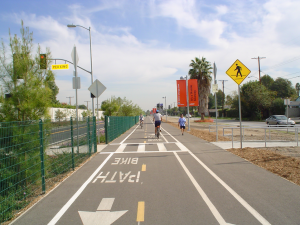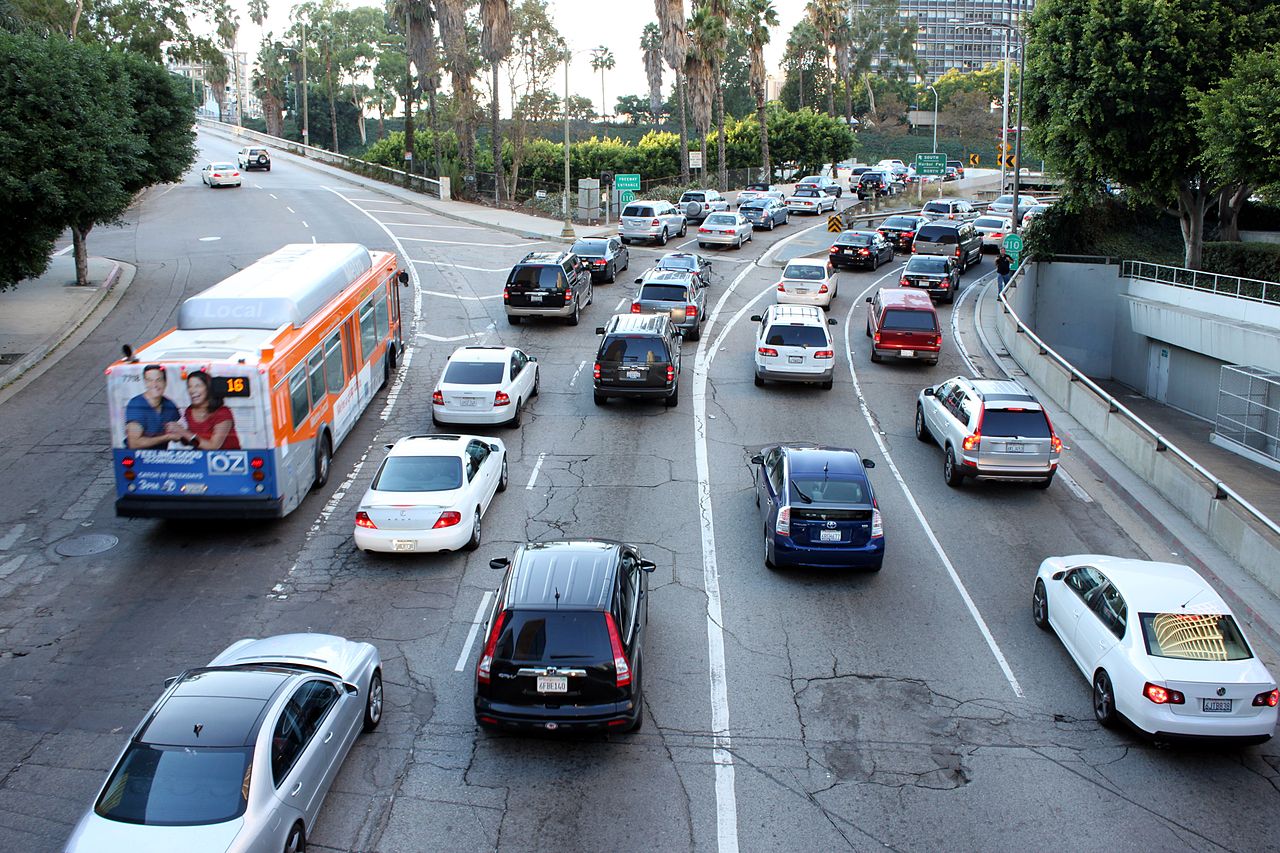LOS ANGELES—On Tuesday, August 11, the Los Angeles City Council approved Mobility Plan 2035, a 20-year plan to improve transportation in LA, with safety and alternatives to driving being the highest priorities.
Mobility Plan 2035 is the first major update to LA’s transportation infrastructure since 1999. It adds about 300 miles of bike lanes, bus-only lanes, lanes that will be designated one way during morning and evening commuting times, bus stop amenities, and more. According to a June 2015 press release from LA2B, a public outreach campaign by the city’s planning and transportation departments, full implementation of the plan would “take 219,000 trips off of our roads every day, and result in 1.7 million fewer miles traveled every day.”

Certain streets, including Hillhurst Avenue, Silver Lake Boulevard, and Cahuenga Boulevard, will receive cycle tracks, which are different from bike lanes because they are separated from the streets by a buffer. Some of LA’s busiest streets, such as Wilshire and Highland, will get curb extensions, which serve to narrow the roadway at crosswalks, making it safer for pedestrians. The plan has also formally adopted Vision Zero, an international road safety initiative that aims to reduce the number of traffic fatalities to zero.
The plan passed 12-2, with the two dissenting votes coming from Gil Cedillo and Paul Koretz. Cedillo, a representative of East Los Angeles, voted against the plan because he didn’t believe that there was enough community input, especially from those living in low-income neighborhoods. Koretz dissented because he wanted to exempt Westwood Boulevard, part of his district, from the plans to add bike lanes.
According to Streetsblog LA, the majority of public comment on the plan during the city council meeting was positive. Advocacy group Fix the City opposes it. They argue that that narrowing the roadway for bike lanes will cause increased traffic in already congested neighborhoods. Fix the City board member Don Parker commented to the Los Angeles Times, “[L]abeling it a mobility plan is just not reflective of what the plan actually does.” The plan can be read in full here.






